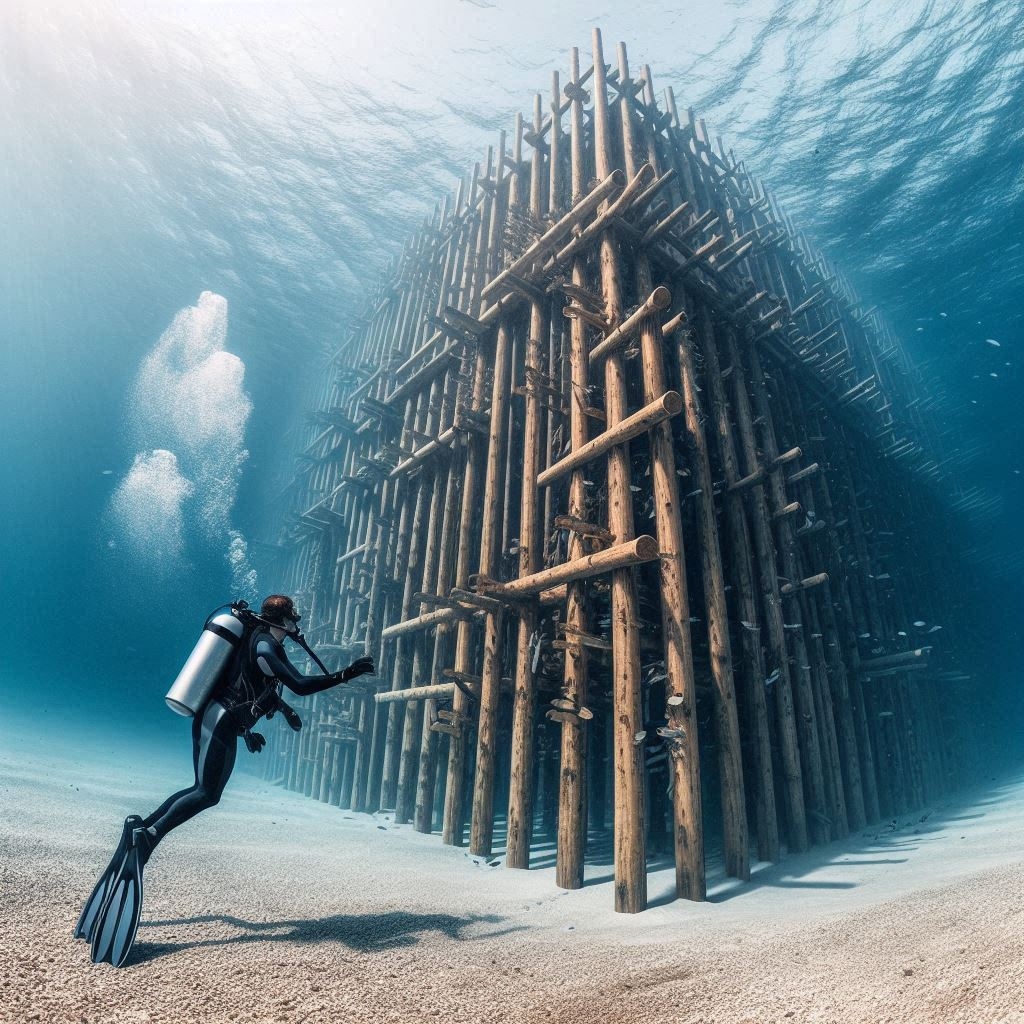Really dive into Sustainable Tourism
As global awareness of environmental issues grows, there is a rising demand for tourism that not only entertains but also educates and supports ecological sustainability. One fascinating approach to this is the creation of underwater ecological attractions. These installations not only draw tourists but also play a significant role in enhancing marine biodiversity. Let’s explore how we can build underwater items to help build ecology and boost tourism.
The Concept of Underwater Ecological Attractions
Underwater ecological attractions are structures placed in marine environments to promote biodiversity while providing a unique experience for divers and snorkelers. These installations can range from artificial reefs and underwater museums to sustainable sculptures and habitats for marine life. The goal is to create a synergy between tourism and conservation, offering visitors a chance to witness and support the restoration of marine ecosystems.

Designing for Ecology
Artificial Reefs
Artificial reefs are man-made structures designed to mimic the characteristics of natural reefs. They provide a habitat for various marine species, promoting biodiversity and helping to restore damaged ecosystems. Materials such as concrete, limestone, and eco-friendly metals are often used to construct these reefs. Proper design ensures that they offer the right surfaces and crevices for coral growth and fish habitation.
Sustainable Sculptures and Installations
Creating art installations underwater can attract tourists while supporting marine life. These sculptures, made from environmentally safe materials, can serve as a substrate for coral and other marine organisms. Over time, they become integrated into the ecosystem, providing shelter and breeding grounds for fish and invertebrates. Examples include the Museo Subacuático de Arte (MUSA) in Mexico, where sculptures are designed to promote coral growth.
Marine Habitats
Installing structures that mimic natural habitats, such as seagrass beds and oyster reefs, can enhance marine biodiversity. These habitats support a range of species, from small fish and invertebrates to larger predators. The design should focus on replicating the complexity and diversity of natural environments to ensure maximum ecological benefit.

Key Considerations for Sustainable Development
Material Selection
Choosing the right materials is crucial for the success of underwater ecological attractions. They should be non-toxic, durable, and conducive to marine life colonization. Avoiding materials that can leach harmful chemicals or degrade quickly is essential to protect the marine environment.
Location and Placement
The location of underwater installations should be carefully chosen to maximize ecological benefits and minimize negative impacts. Areas with existing damage or low biodiversity can benefit most from these projects. Additionally, the placement should consider water currents, depth, and light availability to ensure optimal conditions for marine life.
Monitoring and Maintenance
Regular monitoring and maintenance are vital to the success of underwater ecological projects. This includes checking for structural integrity, assessing marine life colonization, and removing any debris that may accumulate. Collaboration with marine biologists and conservationists ensures that the installations continue to support ecological goals.
Combining Above Water and Underwater Attractions
Integrating both above water and underwater elements can create a comprehensive and immersive ecological attraction. This combination not only enhances the visitor experience but also maximizes the ecological benefits by supporting a wider range of habitats and species.
Above Water Features
Structures such as observation decks, boardwalks, and educational centers can provide visitors with insights into the marine environment and the importance of conservation efforts. These features offer an engaging introduction to the underwater attractions, setting the stage for the immersive experience below.

Underwater Features
Complementing the above-water attractions with underwater installations such as artificial reefs, sculptures, and marine habitats creates a seamless transition between the two environments. Visitors can begin their journey on land, learning about marine life and conservation, and then venture underwater to witness these concepts in action.
Educational Programs and Tours
Offering guided tours and educational programs that encompass both above-water and underwater elements can enhance the overall experience. These programs can include information on marine biology, conservation efforts, and the significance of the underwater installations, providing a holistic understanding of the ecosystem.
Sustainable Integration
Ensuring that both above water and underwater features are designed and maintained sustainably is crucial. This includes using eco-friendly materials, minimizing human impact on the environment, and promoting conservation awareness among visitors.
Pre-Construction and Installation
One of the advantages of building underwater ecological attractions is the ability to construct them on land before placing them in the water. This approach allows for more precise construction, ensuring that the structures are safe, durable, and effective in promoting marine life.
Controlled Construction Environment
Building the structures on land provides a controlled environment where materials can be carefully selected and assembled with precision. This reduces the risk of errors and ensures that the structures meet all safety and environmental standards.
Ease of Transportation and Installation
Once the structures are built, they can be transported to the chosen location and carefully installed in the water. This process involves coordinating with marine engineers and biologists to ensure that the placement is optimal for both ecological benefits and visitor experience.
Testing and Adjustments
Constructing the structures on land also allows for thorough testing before installation. Any necessary adjustments can be made to improve the design and functionality, ensuring that the structures effectively support marine life once placed underwater.

Benefits of Underwater Ecological Attractions
Enhanced Biodiversity
By providing new habitats and supporting coral growth, underwater installations can significantly enhance local biodiversity. This contributes to the overall health of marine ecosystems, supporting a wide range of species.
Tourism and Education
These attractions offer a unique and immersive experience for tourists, fostering a deeper connection with the marine environment. They also serve as educational platforms, raising awareness about marine conservation and the importance of protecting our oceans.
Economic Benefits
Underwater attractions can boost local economies by attracting divers, snorkelers, and eco-tourists. This generates revenue for local businesses, including dive shops, hotels, and restaurants. Additionally, it creates jobs in tourism, conservation, and maintenance.
Research Opportunities
These installations provide valuable opportunities for scientific research. Marine biologists can study the effectiveness of artificial reefs, the behavior of marine species, and the impact of tourism on marine ecosystems. This research can inform future conservation efforts and the development of more effective ecological projects.
Conclusion
Building underwater items to help build ecology as a tourism attraction is a win-win for both the environment and local communities. By integrating sustainability into tourism, we can create unique experiences that foster a deeper appreciation for marine life while supporting conservation efforts. The success of such projects relies on thoughtful design, careful material selection, and ongoing monitoring. By combining both above water and underwater elements, and taking advantage of pre-construction on land, we can create a comprehensive and immersive ecological attraction that maximizes both visitor engagement and ecological benefits. As we continue to innovate and explore, the potential for underwater ecological attractions to transform tourism and promote marine biodiversity is truly exciting.
Join the Discussion
Have you visited an underwater ecological attraction? What are your thoughts on using tourism to promote marine conservation?

















Free Links That Power No.1 Gateways To Happy Changing Cities
[…] Free road links can incorporate permeable pavements, bioswales, and rain gardens to manage stormwater more effectively. These features allow rainwater to infiltrate the ground, reducing surface runoff and preventing […]